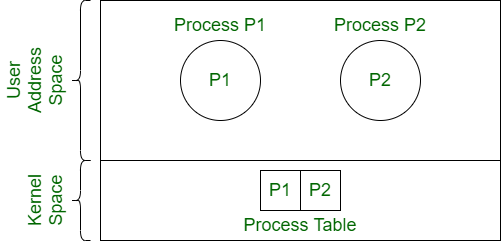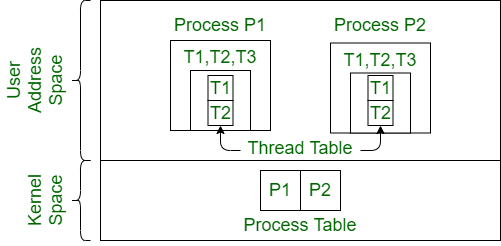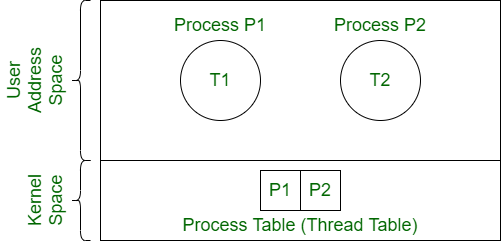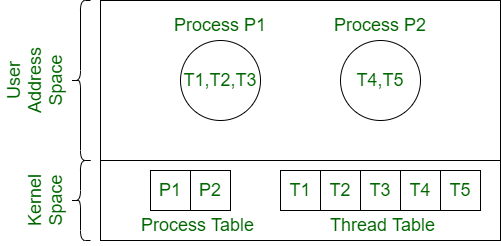Thread Models in Operating System
Last Updated :
10 Feb, 2022
A thread is a light weight process which is similar to a process where every process can have one or more threads. Each thread contains a Stack and a Thread Control Block. There are four basic thread models :
1. User Level Single Thread Model :
- Each process contains a single thread.
- Single process is itself a single thread.
- process table contains an entry for every process by maintaining its PCB.

2. User Level Multi Thread Model :
- Each process contains multiple threads.
- All threads of the process are scheduled by a thread library at user level.
- Thread switching can be done faster than process switching.
- Thread switching is independent of operating system which can be done within a process.
- Blocking one thread makes blocking of entire process.
- Thread table maintains Thread Control Block of each thread of a process.
- Thread scheduling happens within a process and not known to Kernel.

3. Kernel Level Single Thread Model :
- Each process contains a single thread.
- Thread used here is kernel level thread.
- Process table works as thread table.

4. Kernel Level Multi Thread Model :
- Thread scheduling is done at kernel level.
- Fine grain scheduling is done on a thread basis.
- If a thread blocks, another thread can be scheduled without blocking the whole process.
- Thread scheduling at Kernel process is slower compared to user level thread scheduling.
- Thread switching involves switch.

Share your thoughts in the comments
Please Login to comment...